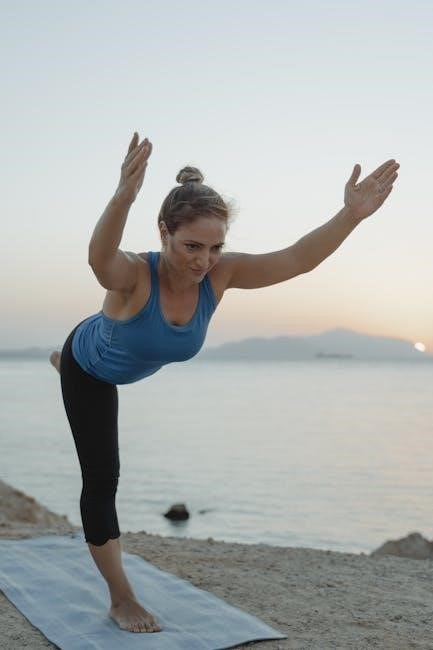Understanding Anterolisthesis
Anterolisthesis involves a forward spinal vertebra slippage, often affecting the lower back. It is classified into grades based on the degree of slippage, impacting treatment approaches and recovery strategies.
Definition and Overview
Anterolisthesis is a spinal condition characterized by the forward displacement of a vertebral body relative to the vertebra below it. It is a type of spondylolisthesis, which refers to any abnormal movement of a vertebra. This condition most commonly affects the lumbar spine but can also occur in the cervical region. The severity of anterolisthesis is graded on a scale from 1 to 4, with Grade 1 representing mild slippage (up to 25%) and Grade 4 indicating severe displacement (more than 75%). Symptoms may include lower back pain, muscle weakness, numbness, or tingling in the legs. It is often caused by aging, degenerative arthritis, or congenital spinal abnormalities. Diagnosis is typically made using imaging studies such as X-rays, CT scans, or MRIs. Understanding the definition and overview of anterolisthesis is essential for developing appropriate treatment plans and exercises to manage the condition effectively.

Grades of Anterolisthesis
Anterolisthesis is classified into four grades based on the degree of vertebral slippage. Grade 1 indicates mild slippage, with the vertebra displaced up to 25% of its normal position. Grade 2 involves 26-50% slippage, while Grade 3 represents 51-75% displacement. Grade 4 is the most severe, with the vertebra slipping more than 75%. These grades are determined using imaging studies like X-rays or MRIs. The Meyerding classification is commonly used to assess the severity. Higher grades often correlate with more significant symptoms, such as nerve compression or spinal instability. Understanding the grade of anterolisthesis is crucial for determining the appropriate treatment approach, including exercises tailored to the severity of the condition. Mild cases may focus on strengthening and stabilizing the spine, while severe cases might require surgical intervention to prevent further complications.
Symptoms and Diagnosis
Anterolisthesis symptoms vary depending on the severity of the slippage. Common symptoms include lower back pain, muscle weakness, and numbness or tingling in the legs. Severe cases may cause difficulty walking or loss of bladder function. Diagnosis is typically made through imaging studies such as X-rays, CT scans, or MRIs, which reveal the forward displacement of the vertebra. The Meyerding classification is used to grade the slippage, helping guide treatment decisions. Mild cases may not exhibit noticeable symptoms, while more advanced grades can lead to spinal stenosis or nerve compression. Early diagnosis is crucial for effective management and preventing further complications. Imaging studies also help identify underlying causes, such as fractures or degenerative conditions. Accurate diagnosis ensures personalized treatment plans, whether through conservative measures or surgical intervention.
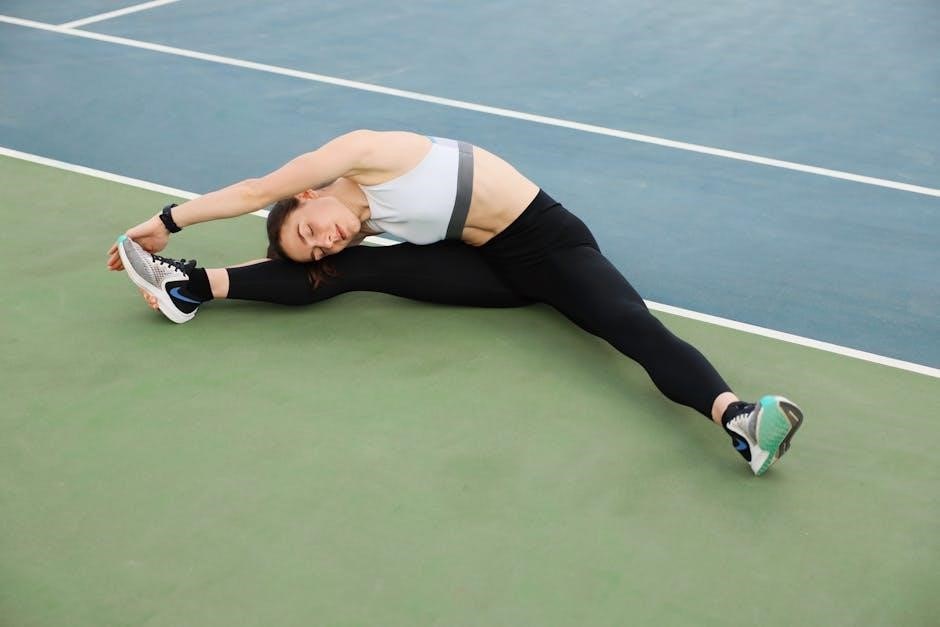
Exercises for Anterolisthesis
Exercises for anterolisthesis focus on strengthening core muscles, improving flexibility, and enhancing spinal stability. They include stretching, strengthening, and low-impact aerobic activities to alleviate symptoms and promote spinal health.
Strengthening Exercises
Strengthening exercises for anterolisthesis focus on building core and spinal muscles to improve stability and reduce slippage. Planks are highly recommended as they strengthen the abdominals and back muscles, which help stabilize the spine. Bird-dog exercises, performed on hands and knees, also enhance spinal stability by targeting the transverse abdominis and multifidus muscles.
Pelvic tilts and bridges are effective for strengthening the lower back and hip muscles. These exercises improve posture and reduce strain on the spine. Superman exercises, which involve lying on the stomach and lifting arms and legs, strengthen the erector spinae muscles, providing additional spinal support.
Strengthening exercises should be performed with proper form to avoid exacerbating the condition. It is crucial to start slowly and progress under medical or physical therapy guidance to ensure safety and effectiveness. Regular practice can help alleviate symptoms and improve overall spinal health.
Stretching Exercises
Stretching exercises for anterolisthesis aim to improve flexibility and reduce muscle tension without exacerbating the condition. Gentle hamstring stretches are often recommended, as tight hamstrings can pull on the lower back, worsening slippage. Seated or standing stretches can be performed with a focus on controlled movements.
Cat-Cow stretches are beneficial for mobilizing the spine while maintaining stability. This exercise involves moving slowly between a rounded and arched back position, helping to relieve stiffness and improve range of motion. Additionally, hip flexor stretches can reduce pressure on the lower back by addressing tightness in the hip muscles.
Stretching should be done carefully to avoid overextending the spine. Dynamic stretches, rather than bouncing, are preferred to maintain safety and effectiveness. Regular stretching can complement strengthening exercises, promoting overall spinal health and symptom relief.
Stability and Core Exercises
Stability and core exercises are essential for managing anterolisthesis, as they help stabilize the spine and reduce slippage. These exercises focus on strengthening the abdominal and back muscles, which provide support to the spinal column. Planks are a common recommendation, as they engage the transverse abdominis muscle, the body’s natural corset. Bird-Dog exercises are also beneficial, promoting balance and coordination while strengthening the core and spinal muscles.
Exercises like the Superman stretch can help strengthen the erector spinae muscles in the lower back, improving posture and reducing strain on the spine. Pelvic tilts and bridges are also effective for enhancing spinal stability and controlling movement. It’s important to perform these exercises slowly and with control to avoid exacerbating the condition. Strengthening the core and improving spinal stability can help alleviate symptoms and prevent further slippage.
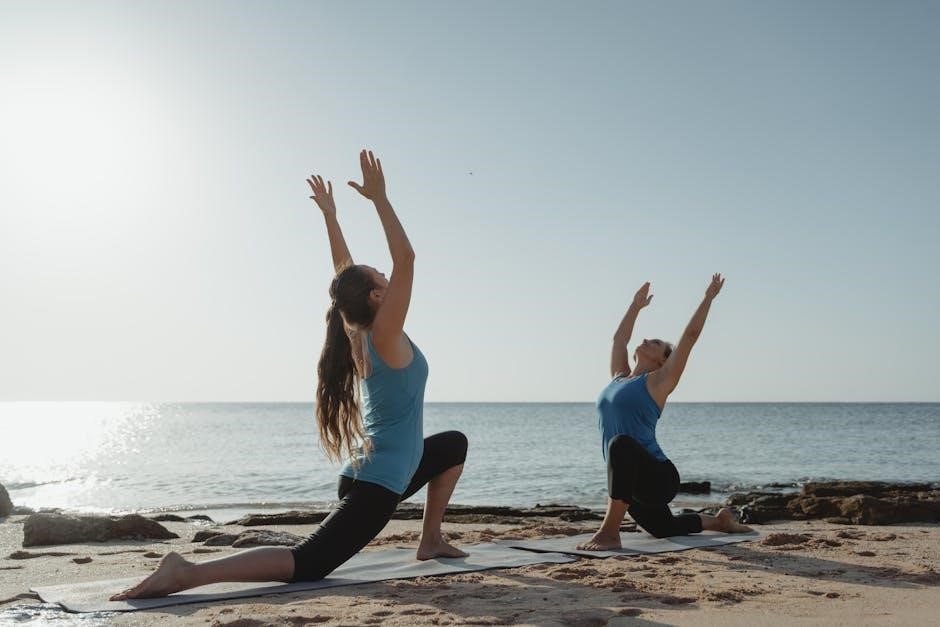
Low-Impact Aerobic Exercises
Low-impact aerobic exercises are an excellent way to maintain cardiovascular health while minimizing stress on the spine for individuals with anterolisthesis. Activities such as swimming, cycling, or using an elliptical machine are highly recommended, as they promote blood flow and endurance without putting excessive strain on the vertebrae.
Brisk walking and gentle yoga can also be beneficial, as they improve flexibility and posture without high-impact movements. These exercises help strengthen the muscles around the spine, improving overall stability and reducing the risk of further slippage. It’s important to avoid activities that involve heavy lifting, twisting, or repetitive bending, as these can exacerbate the condition. Always consult with a healthcare provider or physical therapist to tailor a routine that suits your specific needs and promotes safe, effective progression.

Creating a Workout Plan
A well-structured workout plan for anterolisthesis should focus on strengthening core muscles, improving flexibility, and enhancing spinal stability. It must be personalized to the individual’s fitness level and condition severity.
Assessing Fitness Level
Evaluating your fitness level is crucial before starting an exercise program for anterolisthesis. This assessment helps determine your strength, flexibility, and overall physical condition. A healthcare professional or physical therapist typically conducts this evaluation. They may perform a physical exam, review your medical history, and discuss your symptoms. Your pain levels, range of motion, and muscle strength are key factors. Additionally, lifestyle factors such as activity level and previous exercise experience are considered. This step ensures that the workout plan is tailored to your specific needs and abilities. It also helps identify any limitations or precautions necessary to avoid exacerbating the condition. Accurate assessment prevents overexertion and ensures a safe, effective progression of exercises. Without proper evaluation, the risk of injury or worsening symptoms increases. Thus, it is essential to consult with a professional before beginning any exercise routine for anterolisthesis.
Setting Realistic Goals
Setting realistic goals is essential when developing an exercise plan for anterolisthesis. These goals should be specific, measurable, achievable, relevant, and time-bound (SMART). Consider your current fitness level, symptoms, and what you hope to achieve through exercise. For example, short-term goals might include improving core strength or reducing pain, while long-term goals could focus on enhancing mobility or preventing further slippage. Work with a healthcare provider or physical therapist to tailor these goals to your condition. It’s important to avoid setting overly ambitious targets, as this can lead to frustration or injury. Instead, focus on gradual progression and celebrate small achievements. Realistic goals ensure a balanced approach to exercise, prioritizing spinal health and overall well-being. By aligning your objectives with your capabilities and limitations, you can create a sustainable and effective workout plan for managing anterolisthesis.
Sample Exercise Routine
A sample exercise routine for anterolisthesis focuses on strengthening, stretching, and improving spinal stability while minimizing strain. Begin with gentle stretching, such as the cat-cow stretch to improve spinal flexibility. Incorporate core-strengthening exercises like planks and bird-dog to enhance spinal support. Pelvic tilts and bridging can help strengthen the lower back muscles. Low-impact aerobic activities, such as swimming or cycling, are ideal for maintaining cardiovascular health without risking further injury. Include stability exercises like single-leg stands or balance boards to improve posture and reduce slippage. Avoid heavy lifting, bending, or high-impact activities that may worsen the condition. Always consult a healthcare provider or physical therapist to tailor the routine to your specific needs and progress gradually. Proper form and adherence to recommendations are key to safely managing anterolisthesis through exercise.
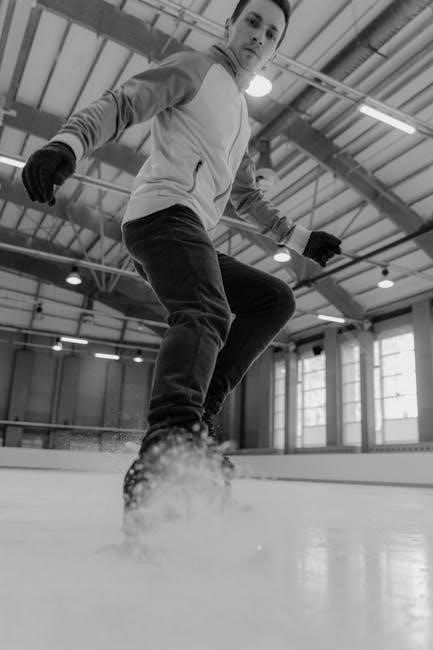
Progressing the Workout Plan
Progressing a workout plan for anterolisthesis requires careful consideration to avoid exacerbating the condition. Begin with low-intensity exercises and gradually increase the difficulty as strength and stability improve. For example, start with gentle stretches like the cat-cow stretch and progress to more dynamic movements like pelvic tilts. Strengthening exercises, such as planks and bird-dog, can be modified by increasing hold times or adding resistance. Balance exercises, such as single-leg stands, can be enhanced by closing the eyes or using unstable surfaces. Always prioritize proper form and avoid overexertion. Consult a physical therapist to tailor the progression to your specific needs and ensure safe advancement. Gradual progression helps build resilience without risking further injury. Consistency and patience are key to achieving long-term benefits and maintaining spinal health.
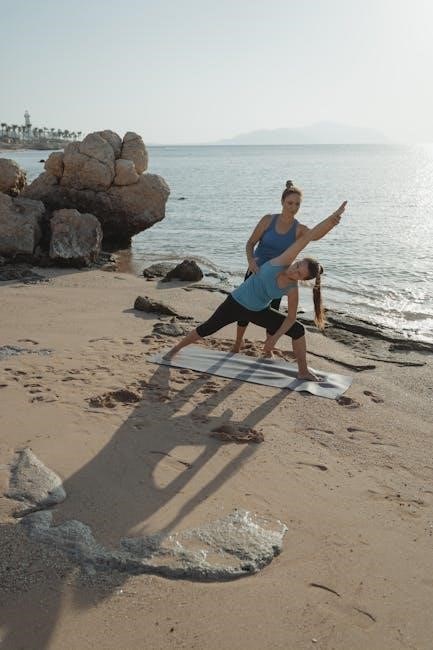
Additional Resources
PDF guides for anterolisthesis exercises provide structured routines and expert advice. These resources are available on medical websites, orthopedic institutions, and physical therapy platforms, offering comprehensive exercise plans and tips.
PDF Guides for Anterolisthesis Exercises
PDF guides for anterolisthesis exercises are invaluable resources for managing and treating the condition. These guides typically include detailed exercise routines, stretching techniques, and core-strengthening programs tailored to address the specific needs of individuals with anterolisthesis. Many guides are developed by physical therapists or orthopedic specialists, ensuring evidence-based and safe practices. They often cover topics such as low-impact aerobic exercises, stability workouts, and pain management strategies. Additionally, these PDFs may provide visual illustrations and step-by-step instructions to help users perform exercises correctly. Some guides also include nutritional advice and lifestyle modifications to support spinal health. These resources are widely available on medical websites, orthopedic institutions, and physical therapy platforms, making them accessible to patients seeking structured and guided rehabilitation plans. They are particularly useful for individuals looking to maintain consistency in their exercise routines and track their progress effectively.
